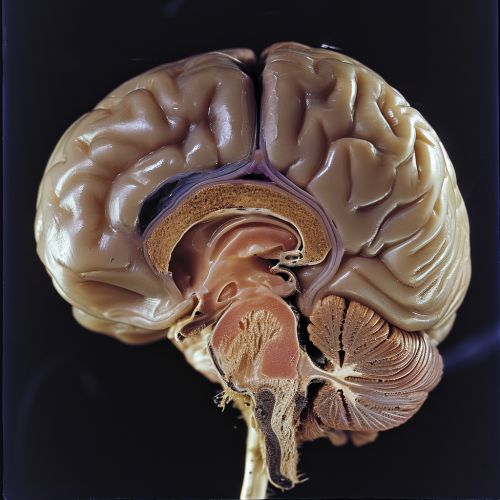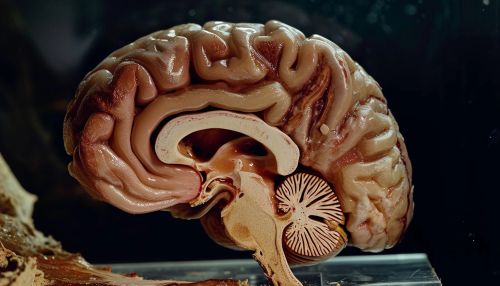Edinger-Westphal nucleus
Anatomy
The Edinger-Westphal nucleus (EWN) is a paired structure of the brain, located in the midbrain, specifically in the superior colliculus region. It is named after two neurologists, Ludwig Edinger and Carl Friedrich Otto Westphal, who contributed significantly to its discovery and understanding. The EWN is part of the oculomotor complex, which is responsible for controlling certain eye movements.


Function
The primary function of the EWN is to control the constriction of the pupil (miosis) and the shape of the lens in the eye. It does this by sending parasympathetic signals to the ciliary ganglion, which in turn innervates the sphincter pupillae and ciliary muscles in the eye. The EWN also has a role in accommodation, which is the process by which the eye changes optical power to maintain a clear image on the retina as the distance to the target changes.
Neurotransmitters
The neurons in the EWN primarily use the neurotransmitter acetylcholine, but also express several neuropeptides, including urocortin, a member of the corticotropin-releasing factor (CRF) family. These neuropeptides are thought to play a role in stress response, feeding behavior, and other functions.
Clinical Significance
Lesions or damage to the EWN can result in oculomotor nerve palsy, which can cause double vision, inability to move the eye in certain directions, and a dilated pupil that does not respond to light or accommodation. The EWN is also thought to play a role in certain psychiatric disorders, such as anxiety and depression, due to its expression of stress-related neuropeptides.
Research
Research on the EWN has focused on its role in eye movements, stress response, and psychiatric disorders. Recent studies have used advanced imaging techniques, such as functional magnetic resonance imaging (fMRI), to study the EWN in living humans. Animal models, particularly non-human primates, are also commonly used in EWN research.
